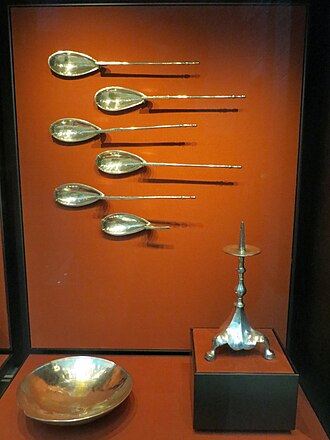| Lampsacus Treasure | |
|---|---|
 Part of the Lampsacus Treasure as currently displayed in the British Museum | |
| Material | Silver |
| Created | 6th-7th Century AD |
| Present location | British Museum, London |
The Lampsacus Treasure or Lapseki Treasure is the name of an important early Byzantine silver hoard found near the town of Lapseki (ancient Lampsacus) in modern-day Turkey. Most of the hoard is now in the British Museum's collection, although a few items can be found in museums in Paris and Istanbul too. [1]

